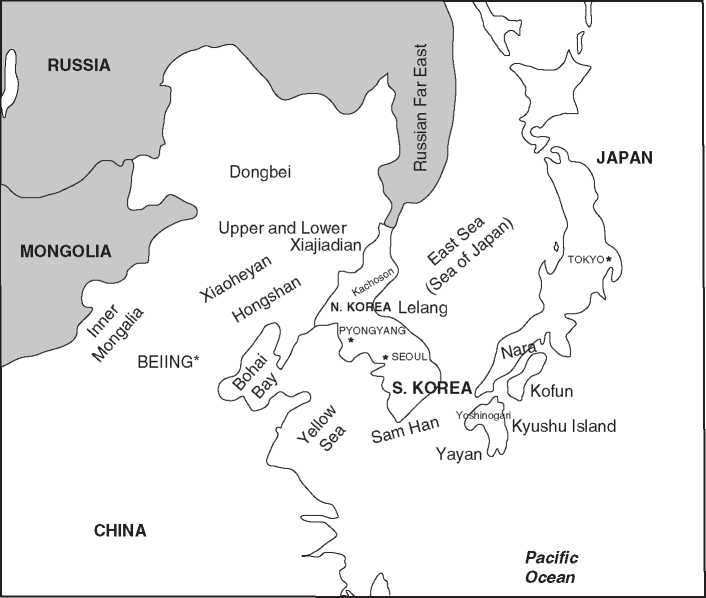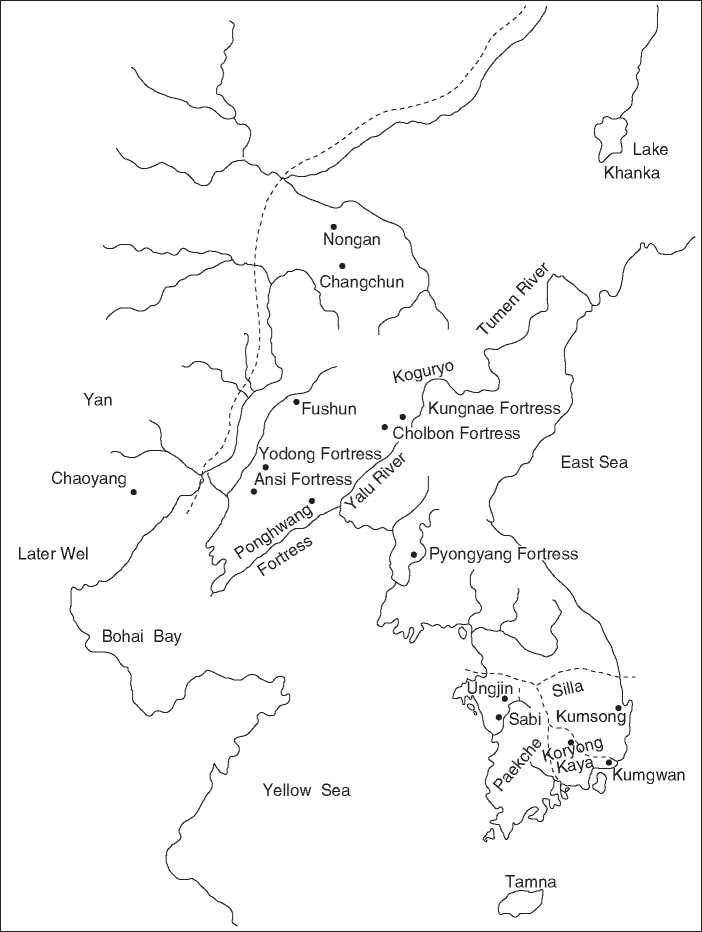Social and political complexity emerged in the northeastern part of the Asian continent first in Inner Mongolia and Liaoning Province. The Hongshan period demonstrates early social stratification, followed by a little-known culture called Xiaoheyan, and the better studied Lower Xiajiandian and Upper Xiajiadian. These are followed by Bronze Age societies in Liaoning and Jilin Provinces, including the Liaod ong peninsula, containing some high status burials but no known central places.
Hongshan (4000-2500 BCE) is best known for its ritual building with life-sized statues in an elaborate ceremonial area, another ritual area featuring smaller pregnant figurines, and elite burials containing no burial goods except highly polished jades. The jades take specific shapes, such as pig-dragons, clouds, birds, and tortoises, suggesting that they might mark ranks or craft specialties. The pig appears to have been venerated, suggested not only by pig-dragon jades, but also by a life-sized pig statue in the ritual building, and a hill which, viewed from the Goddess Temple, resembles a pig head, with pointed ears. Several archaeologists describe the leaders of Hongshan to be wu, a Chinese word which describes shaman-like characteristics and duties. Xiaoheyan (2800-2100 BCE) overlaps with Hongshan, but its distinctive pottery assemblage sets it apart.
Lower Xiajiadian (LXJD) and Upper Xiajiadian culture (UXJD) were named from a single stratified site where both were first discovered. Since that time, many sites of each period have been located and excavated, and the distinction between them is clear, both in terms of time and cultural characteristics.
Lower Xiajiadian is dated 2300-1600 BCE, almost contemporaneous with Erlitou on the Yellow River in China, which is thought by many to be the remains of the Xia, China’s earliest dynasty. Although a gap appears in C-14 dates between the Hongshan period and LXJD, some Hongshan jades have been found in LXJD burials, and some LXJD sites directly overlie Hongshan layers.

Figure 1 Northeast Asia, with archaeological cultures located.
Because Xia was described as the first dynasty in China in Chinese histories, the discovery of a contemporaneous complex society far to the northeast was surprising to Chinese archaeologists and historians. Polychrome pottery from LXJD contexts, with-painted designs that appear to be forerunners of the decoration on Shang dynasty bronzes, was another surprising discovery (Figure 3). Baggy-legged tripods are new in LXJD, comprising most of the cooking pots. Small tripod pitchers are also new in the region, but otherwise LXJD continued to produce and use many of the same stone tools and much of the same types of pottery as before, in spite of having some small bronze artifacts.
LXJD remains are found mostly in Inner Mongolia, although a few sites have been found to the south and east in Liaoning Province. The most conspicuous sites loom on ridges above major rivers, marked by still extant extensive stonewalls and fallen towers, with stone circular footings for buildings inside the walls on the hilltops. In addition to these high sites, unwalled villages have been unearthed. Sites of three sizes are distributed in a central place type hierarchy, suggesting political centralization.
A burial site with about 800 graves was completely excavated at Dadianzi, displaying conspicuous gradation of ranking by both the depth of the burials (the richest are up to seven meters deep) and the richness of the grave goods, including small bronze objects. Wooden coffins were used for the larger and richer burials. Red and black lacquer layered on bamboo and wooden artifacts, as well as abundant seashells, may well indicate trade with the south. Animal scapuli prepared by boring holes were used to divine the will of the spirits and ancestors according to the way cracks formed in the fire. Such ‘oracle bones’ with inscriptions are well known from the Late Shang, around 1250 BCE. However, uninscribed oracle bones are a Dongbei development dating back some two millennia earlier than LXJD north of the Xilamulun River, and presumably continuously used for about 4000 years (see below).
Although the rich graves belong to both men and women, a gender distinction in placement is evident. All the burials are flexed and on their sides with their heads to the northeast, but the males face the village and the females face away from the village. Another gender difference is that women tend to be accompanied by spindle whorls while men are more likely to have stone axes.
It has been argued that LXJD is just as complex as Erlitou, in terms of economy, ranking, extent of the

Figure 2 Korea and Manchuria, with sites located.
Polity, craft specialization, and intensive agriculture. Certainly it seems that the two polities were directly or indirectly in contact.




 World History
World History









